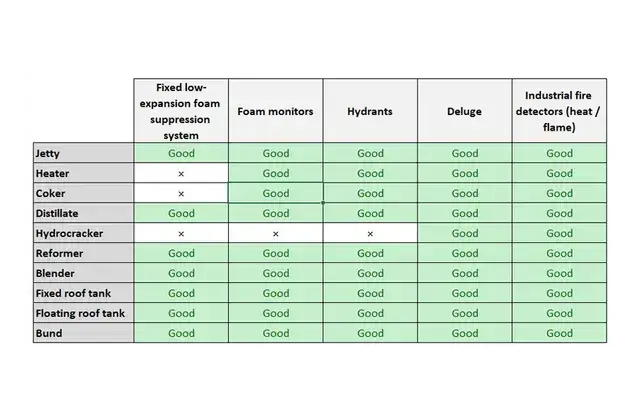How do you mitigate fire events?
The storage of flammable liquids with a high vapour pressure, in particular crude oil, poses challenges in view of fire prevention and safety.
An unprotected fire incident can quickly result in large-scale fires, explosions and thick vapour clouds; all of which cause danger to infrastructure, people and the environment. Business interruption with impact on various stakeholders is also a risk in this context.
Build risk awareness then establish solutions
Owners and operators of crude oil storage facilities have several options to mitigate fire events. NFPA 30 (Flammable & Combustible Liquids Code) provides certain guidance; but in addition to codes and standards, owners and operators may want to consider a risk-based approach.
For example, should they let the fire burn out the stored fuel without any fire-fighting activities at the burning tank or maybe couple this rather passive approach with limited protection measures in which they cool the surrounding infrastructure (tanks, process equipment, etc.) to prevent escalation of the fire event (i.e. to prevent so-called “domino effects”).
Or, they decide to actively attack the fire, by using fixed and/or mobile fire protection systems to suppress the fire.
Solution matrix for different O&G applications
Fixed foam suppression systems typically consist of foam storage tanks, proportioning/mixing devices and and foam discharge devices. Those, for example, can be located at the top of the tank. At fixed roof tanks, foam chambers and pourers are used. Floating roof tanks make use of rimseal foam makers.
Foam monitors typically protect jetty areas, but they can also be installed to protect other areas such as the tank and bund. However, for the bund areas, it is more common to protect those with either foam chambers and makers or medium expansion generators.
Deluge systems and hydrants work in all these areas; and contribute to the cooling effect.
Industrial fire detectors complement each fixed fire suppression system in so that they are able to detect incidents at early stages and trigger subsequent actions.

Image source: Shutterstock | Viking S.A.


